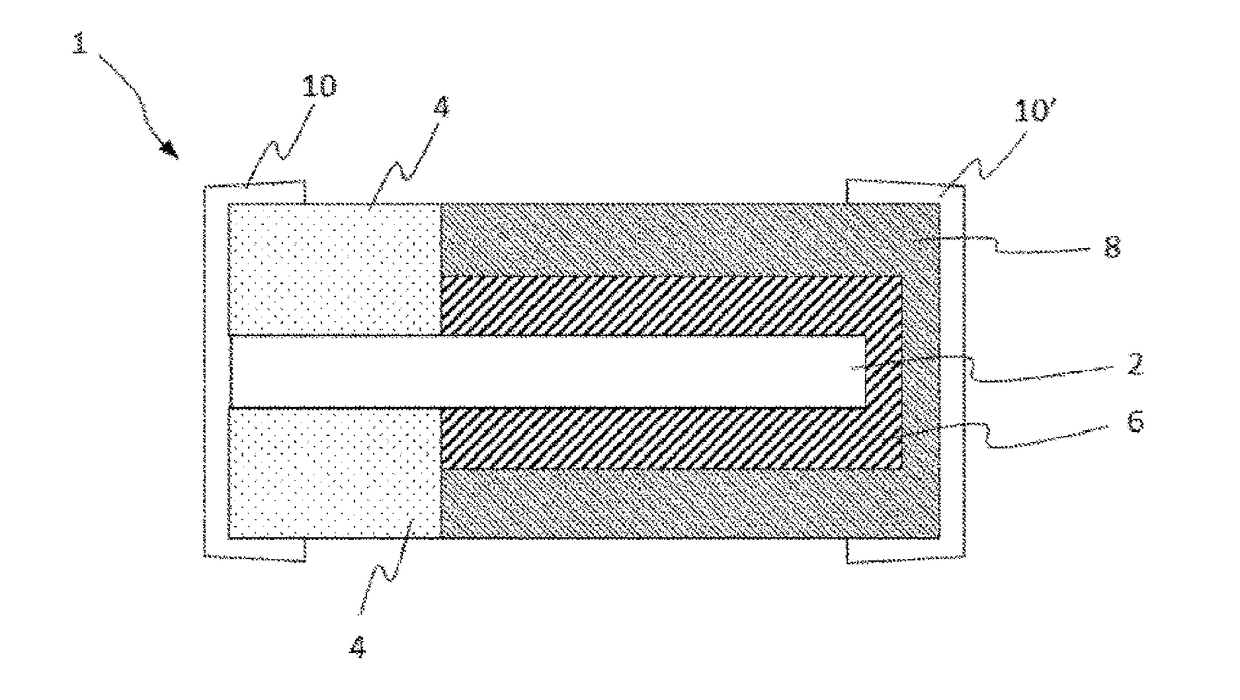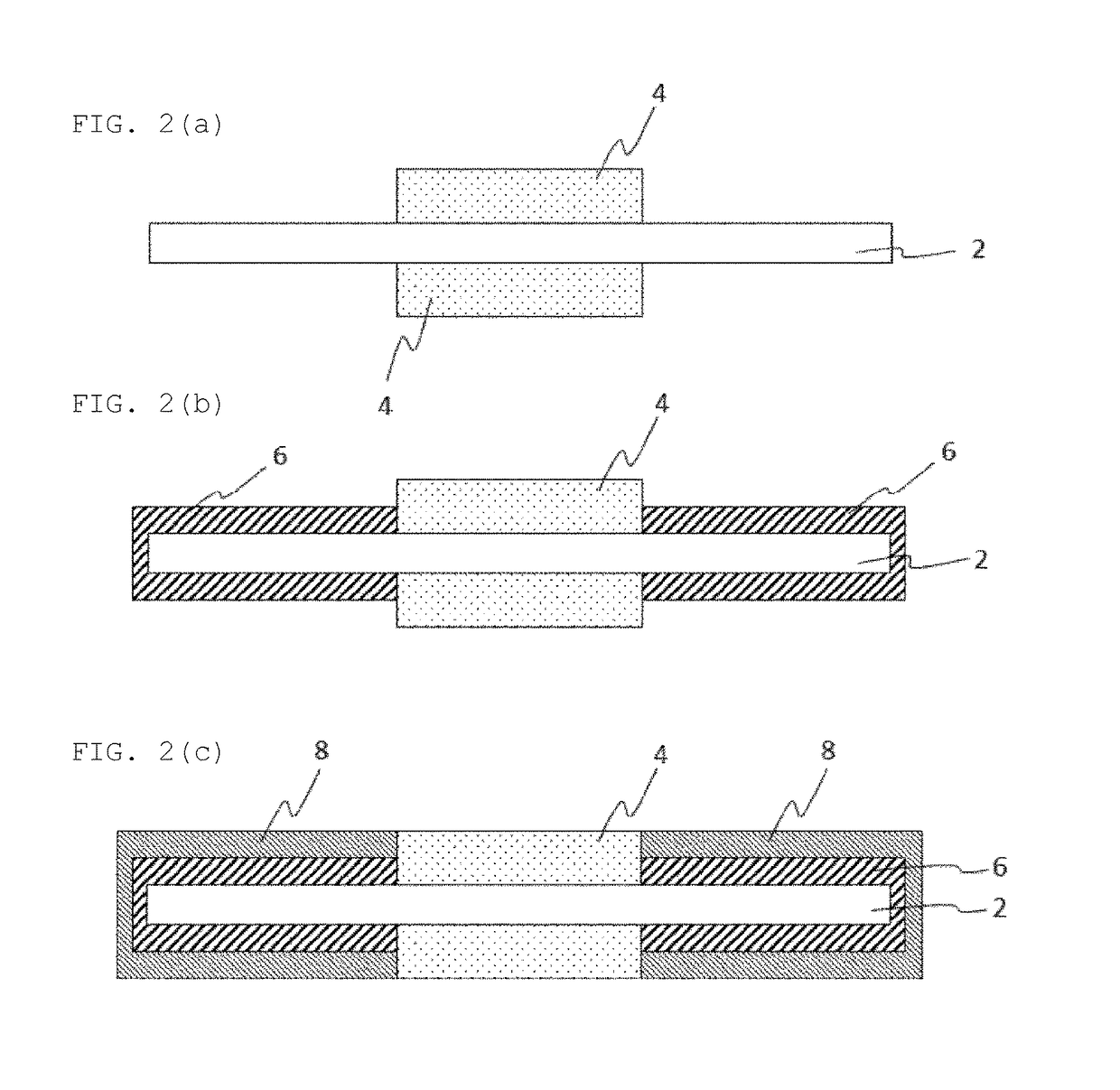Atomic layer deposition-inhibiting material
a technology of inhibiting material and atomic layer, which is applied in the direction of fixed capacitor details, stacked capacitors, fixed capacitors, etc., can solve the problem that conventional patterning techniques may not have sufficient inhibiting effects, and achieve the effect of great inhibiting effects
- Summary
- Abstract
- Description
- Claims
- Application Information
AI Technical Summary
Benefits of technology
Problems solved by technology
Method used
Image
Examples
example
[0083]On an Al substrate of approximately 10 cm on a side, grid-like patterns of 1 mm in line width respectively with the film thicknesses shown in Table 1 below at a pitch of 6 mm were formed by screen printing through the use of a dispenser with the use of the materials A to E shown in Table 1 below. Then, on the substrate with the pattern formed, an atomic layer deposition method was used to form a film of AlOx (Raw Material: trimethylaluminum; Condition: 180 cycles; 250° C.) as an insulating layer, and a TiN film (Raw Material: tetrakis(dimethylamino)titanium and ammonia; Condition: 100 cycles; 250° C.) as an electrode layer. It is to be noted that the materials D and E are considered as examples. The material A is a resin containing no fluorine, the material B is a fluorine-containing resin having an ester linkage in a molecule, and the material C is a fluorine-containing resin having —Si(OH)3 at the terminal end, and these materials are considered as comparative examples.
TABLE...
example 2
[0090]On an Al substrate of approximately 10 cm on a side, a film of AlOx (Raw Material: trimethylaluminum; Condition: 180 cycles; 250° C.) was formed with the use of an ALD method. Then, as in Example 1, grid-like patterns were formed by a screen printing method with the use of a resin D and a resin D′ of the resin D with a terminal end of COOH. Then, a TiN film was formed with the use of an ALD method (Raw Material: tetrakis(dimethylamino)titanium and ammonia; Condition: 100 cycles; 310° C.)
Evaluation
[0091]As in Example 1, the resin application parts were subjected to surface analysis with an X-ray photoelectron spectrometer before and after the ALD. The results are shown in Table 3 below.
TABLE 3ALDInhibitingXPS Analysis (at %)MaterialCNOFAlTiMaterial DBefore ALD35.6—559.4——After ALD37.5 0.35.356.9——Material D′Before ALD35.3—1153.8——After ALD39.514.727.41.9—16.6
[0092]As is clear from the foregoing results, the resin D within the scope of the present invention produced a favorable ...
PUM
| Property | Measurement | Unit |
|---|---|---|
| temperature | aaaaa | aaaaa |
| deposition- | aaaaa | aaaaa |
| conductive | aaaaa | aaaaa |
Abstract
Description
Claims
Application Information
 Login to View More
Login to View More - R&D
- Intellectual Property
- Life Sciences
- Materials
- Tech Scout
- Unparalleled Data Quality
- Higher Quality Content
- 60% Fewer Hallucinations
Browse by: Latest US Patents, China's latest patents, Technical Efficacy Thesaurus, Application Domain, Technology Topic, Popular Technical Reports.
© 2025 PatSnap. All rights reserved.Legal|Privacy policy|Modern Slavery Act Transparency Statement|Sitemap|About US| Contact US: help@patsnap.com



